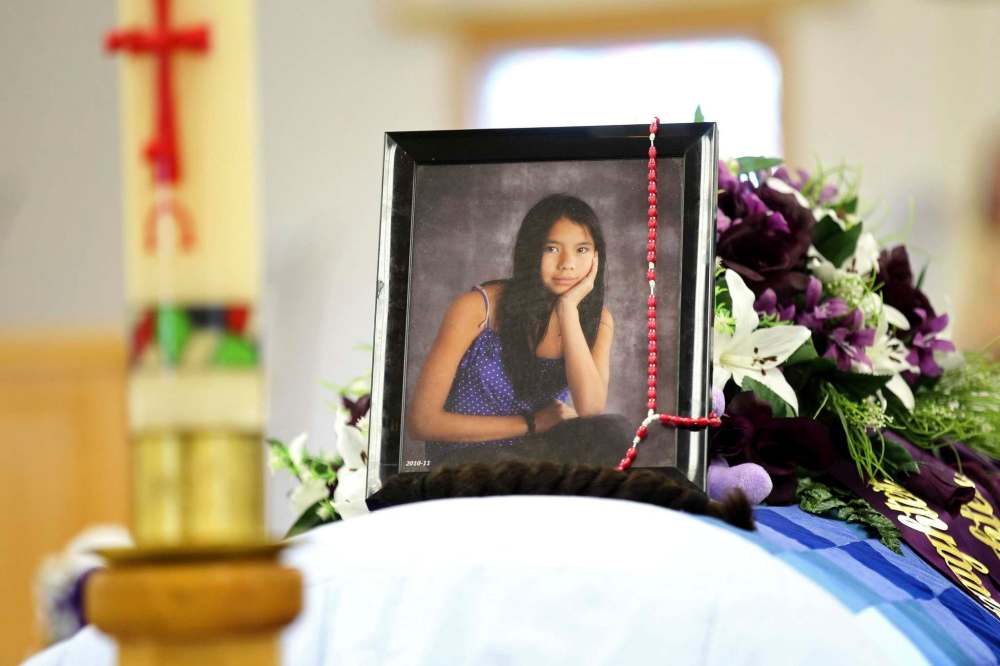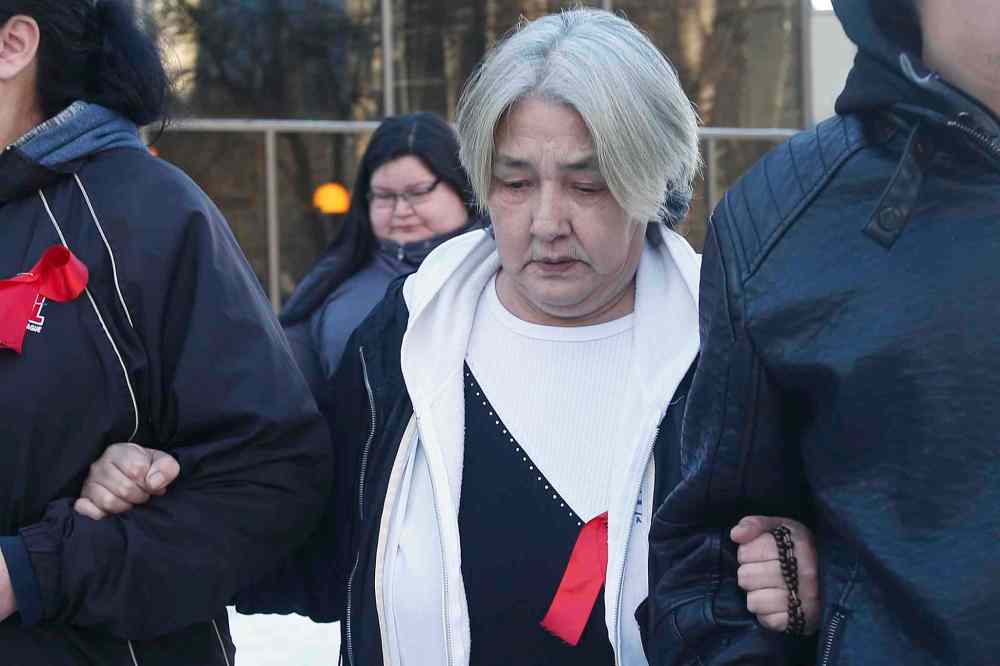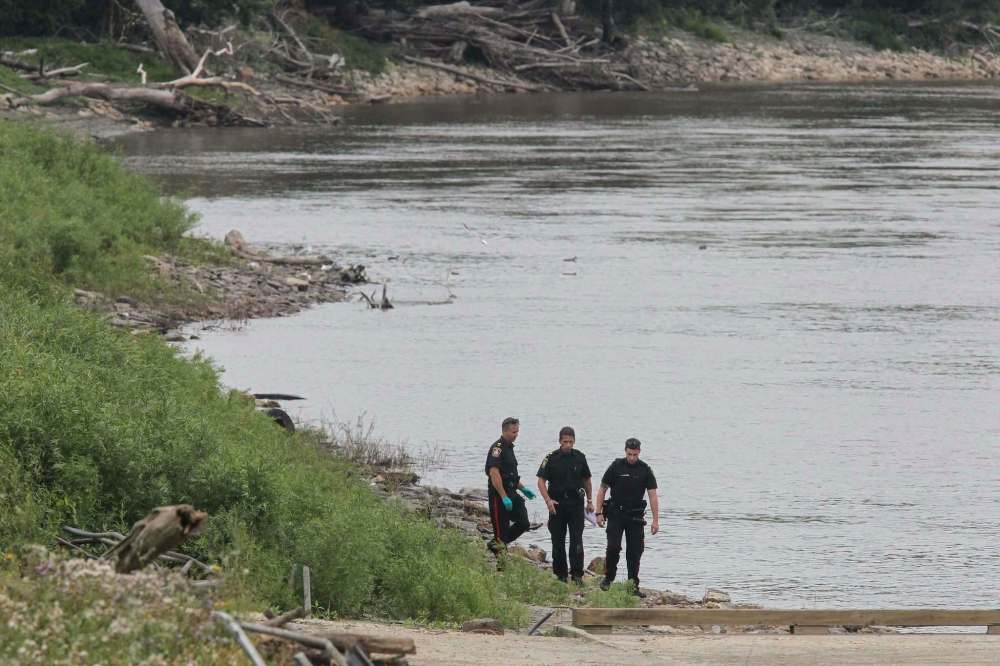Raymond Cormier trial begins: Crown presents theory of Tina Fontaine’s final days
Advertisement
Read this article for free:
or
Already have an account? Log in here »
To continue reading, please subscribe:
Monthly Digital Subscription
$0 for the first 4 weeks*
- Enjoy unlimited reading on winnipegfreepress.com
- Read the E-Edition, our digital replica newspaper
- Access News Break, our award-winning app
- Play interactive puzzles
*No charge for 4 weeks then price increases to the regular rate of $19.00 plus GST every four weeks. Offer available to new and qualified returning subscribers only. Cancel any time.
Monthly Digital Subscription
$4.75/week*
- Enjoy unlimited reading on winnipegfreepress.com
- Read the E-Edition, our digital replica newspaper
- Access News Break, our award-winning app
- Play interactive puzzles
*Billed as $19 plus GST every four weeks. Cancel any time.
To continue reading, please subscribe:
Add Free Press access to your Brandon Sun subscription for only an additional
$1 for the first 4 weeks*
*Your next subscription payment will increase by $1.00 and you will be charged $16.99 plus GST for four weeks. After four weeks, your payment will increase to $23.99 plus GST every four weeks.
Read unlimited articles for free today:
or
Already have an account? Log in here »
Hey there, time traveller!
This article was published 29/01/2018 (2873 days ago), so information in it may no longer be current.
Nearly four years after the homicide of a 15-year-old girl sparked a public outcry and a lengthy search for a suspect, theories of Tina Fontaine’s last days were presented to a jury, sketching a picture of an exploited teen who ended up dead far from her loving home after befriending a much older man.
Police recorded Tina Fontaine’s accused killer saying she died after he found out she was underage, a jury heard Monday as the long-awaited murder trial got underway.
“Tina Fontaine got killed because, we, I, found out she was 15,” Raymond Joseph Cormier allegedly said in recordings police obtained by tapping his apartment during the high-profile homicide investigation.

“Tina Fontaine died because somebody didn’t want to go to jail as a skinner,” the Crown quoted Cormier as saying in the wiretaps.
Cormier, 55, is accused of killing Tina in August 2014, slightly more than a week before a passerby discovered her body wrapped in a duvet cover floating in the Red River. He maintains his innocence.
The jury heard for the first time Monday the Crown’s theory of what happened in a case that captured international attention, renewing calls for an inquiry into missing and murdered Indigenous women and raising questions about Manitoba’s child-welfare system.
Crown prosecutor James Ross, in his opening address, said Tina’s friendship with a man she knew as “Sebastian” ultimately led to her death. He said there is evidence Cormier was using that name, and that he had the same Costco duvet cover that was wrapped around Tina’s body along with 25.5 pounds of rock.
Tina, who was raised by her great-aunt Thelma Favel in Sagkeeng First Nation, came to Winnipeg to visit her mother at the end of June 2014. It was meant to be a week-long visit, but Favel testified Monday she never heard back from Tina despite giving her a long-distance calling card. When Tina didn’t return, Favel said she called police and CFS to help find her.
In painting a picture of Tina’s final days, Ross said she “made a series of poor choices,” and may have never fully appreciated the danger she was in. She was selling marijuana and was found by police on at least one occasion working in the sex trade, Ross said.

“These things can be very dangerous, but we do not believe they are what killed her,” he said.
Cormier pleaded not guilty to second-degree murder, and in order to convict him, the jury will have to be satisfied that Cormier unlawfully caused Tina’s death and had the specific intent to do so, Court of Queen’s Bench Chief Justice Glenn Joyal instructed jurors.
The prosecution doesn’t have any DNA evidence tying Cormier to Tina’s death.
“This is not a case that can be proven or disproven by forensic evidence,” Ross said. “Despite extensive efforts, no forensic evidence or DNA profile was ever uncovered to identify the killer. Simply put, time and the river washed away any evidence there was on the body or the duvet cover.”
“The evidence against Mr. Cormier is indirect… but there is specific evidence pointing to the killer,” he added.
The Crown’s theory is that Tina and Cormier got in a fight around Aug. 6, 2014, and she threatened to report him to police for being in possession of a stolen truck, Ross said. In a recording of a 911 call from 10:18 p.m. on Aug. 6, 2014 played in court Monday morning, Tina tells the dispatcher that her friend, “this guy Sebastian,” stole a blue truck earlier that day. The dispatcher tells Tina to phone city police directly.

“‘Kay then,'” Tina replies.
Upon hearing her great-niece’s voice, Favel broke down in tears on the witness stand, as did several of Tina’s relatives seated in the gallery.
“That’s Tina,” Favel said between sobs.
Police tapped Cormier’s apartment and intercepted recordings in which he “repeatedly and strongly denies killing Tina Fontaine,” Ross told the jury.
But the recordings also show Cormier had a sexual interest in Tina, Ross told the jury.
“If I had to do it over, I would f—- her and f— her properly and go to jail for that,” Cormier allegedly said.

The jury will be given more details on the intercept recordings as the trial goes on. First, they heard from Favel, who talked about Tina’s “sparkling” personality and her own efforts to find the girl who thought of her as her grandma.
“She was such a happy girl, polite, always trying to make everybody’s spirits lift,” Favel said.
Those memories of Tina, and the heartbreak she felt as an 11-year-old when her father, Eugene Fontaine, was murdered on Oct. 31, 2011, stood in stark contrast to the descriptions police and fire personnel gave Monday of the body they pulled from the river.
At five-foot-three and 77 pounds, Tina’s body looked like an “object,” a “bag” or a “rock” when it was pulled out of the river in shallow water about four metres from shore on Aug. 17, 2014 wrapped in a tan-coloured duvet cover, witnesses said.
Those who got close enough, including Darrell Robinson, a primary care paramedic with the Winnipeg Fire Paramedic Service, saw her arms, mottled and blue — “a sign of obvious death,” he said.
Her body was in the water for at least a week, according to Patrol Sgt. Kevin Pawl, who testified about his experience with the Winnipeg Police Service’s dive team.

Crown prosecutors Ross and Breta Passler expect to complete their case within the next two and a half weeks. Cormier is being represented by Tony Kavanagh and Andrew Synyshyn.
katie.may@freepress.mb.ca
Twitter: @thatkatiemay
Tweets by thatkatiemay
Katie May is a general-assignment reporter for the Free Press.
Our newsroom depends on a growing audience of readers to power our journalism. If you are not a paid reader, please consider becoming a subscriber.
Our newsroom depends on its audience of readers to power our journalism. Thank you for your support.
History
Updated on Monday, January 29, 2018 2:00 PM CST: Fixes headline
Updated on Monday, January 29, 2018 2:13 PM CST: Updates headline
Updated on Monday, January 29, 2018 2:27 PM CST: Adds photos
Updated on Monday, January 29, 2018 5:49 PM CST: Updates headline
Updated on Monday, January 29, 2018 6:46 PM CST: Full write through



